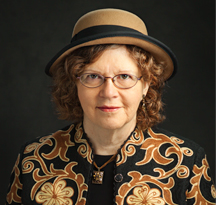Definition of Insanity: Fighting for women’s rights while allowing men to use women’s public restrooms
In 2016 and 2017 Americans witnessed a rise in accusations, founded and unfounded, made by women against men for sexual innuendo, sexual abuse, sexual assault and rape.
Historically women “rights issues” have include but are not limited to: equality in pay, breaking the “glass ceiling” in business and politics, the right to choose and personal safety (from unwanted verbal harassment or sexual abuse).
The feminist movement considers itself to be the standard bearers of women’s rights issues. But are they?
For example, some noted feminist leaders have supported allowing LGBTQ individuals to choose to use women’s public restrooms based upon their “gender identity” rather than their biological sex (male or female). Wikipedia notes:
Some feminists, such as Judith Butler and Jack Halberstam, believe that transgender and transsexual people challenge repressive gender norms and that transgender politics are fully compatible with feminism. Additionally, some transgender and transsexual people, such as Julia Serano and Jacob Anderson-Minshall, identify as transfeminists.
QUESTIONS: How does this prevent the documented sexual abuse of women and little girls in public restrooms? Isn’t this incompatible with the idea/ideal of keeping women safe from sexual abuse? How can feminists fight for the safety of women and girls from sexual abuse while at the same time fight to have the LGBTQ community use the public restroom of their choice regardless of their biological sex?
ANSWER: Feminists use what is called the Hegelian dialectic. The Hegelian dialectic is usually presented in a fourfold manner:
- An agenda.
- Which leads to a thesis.
- Giving rise to an antithesis.
- Leading to a new thesis, which contradicts or negates the original thesis.
The Hegelian dialectic was used to further the feminist movement. But has feminism actually help women?

Diana M. PearcePh.D. faculty member of the University of Washington School of Social Work faculty and director of the Center for Women’s Welfare.
In a 1978 essay titled “The Feminization of Poverty: Women, Work, and Welfare” feminist scholar Dr. Diana Pearce coined the phrase “feminization of poverty.” Pierce lamented that while large opportunities were opening for women due to greater equality, “Poverty is rapidly becoming a female problem.” She blamed the significant increase in the number of female-headed families.
Pearse noted:
Poverty Is rapidly becoming a female problem. Though many women have achieved economic Independence from their spouse by their participation In the labor force (and in some cases, by divorce), for many the price of that independence has been their pauperization and dependence on welfare, in 1976, nearly two out of three of the 15 million poor persons over 18 were women. (Bureau of the Census, 1976) in certain groups, the imbalance was even greater: over 70% of the aged poor are women. Black women, who were only 6.1% of the population in 1975, accounted for 17.0% of the poor that year. (Women’s Bureau, 1977)
The economic status of women has declined over the past several decades. [Emphasis added]
Things have not gotten better for women since 1976. A recent fact sheet from the National Women’s Law Center reported, “Women were 35% more likely to live in poverty than men.”
According to the September 2016 Fact Sheet, National Snapshot: Poverty Among Women & Families 2015:
- More than one in eight women, more than 16.9 million, lived in poverty in 2015. More than 2 in 5 (45.7 percent) of these women lived in extreme poverty, defined as income at or below 50 percent of the federal poverty level. This means nearly 1 in 16 women lived in extreme poverty last year.
Women (13.4 percent) were 35 percent more likely than men (9.9 percent) to live in poverty in 2015. Women were also more likely than men to be in extreme poverty: 6.1 percent of women versus 4.4 percent of men lived in extreme poverty in 2015.- Poverty was even higher for certain groups of women
- Women in all racial and ethnic groups were more likely than white, non-Hispanic men to be in poverty. 9.6 percent of white, non-Hispanic women lived in poverty in 2015, compared to 7.1 percent of white, non-Hispanic men. However, poverty rates were particularly high for women of color:
o African American women: 23.1 percent of African American women lived in poverty.
o Native American women: 22.7 percent of Native American women lived in poverty.
o Hispanic women: 20.9 percent of Hispanic women lived in poverty.
o Asian women: 11.7 percent of Asian women lived in poverty.- More than 1 in 6 (17.6 percent) foreign-born women lived in poverty in 2015.
The Witherspoon Institute published an article titled “Manhood Is Not Natural” by Glenn T. Stanton. Mr. Stanton notes:
Ghettos are not created by city planners, crime by the police, or failing health by big pharma. Each of these social ills arises by inattention to the sexual behaviors of males. If he doesn’t have to marry before having sex (and potentially fathering children), the average man won’t. So he hasn’t. The feminization of poverty and the accompanying declines in female happiness and childhood well-being are the tragic results.
How do feministas and all women turn this around?
In Manhood in the Making, anthropologist David Gilmore provides an essential insight:
One of my findings here is that manhood ideologies always include a criterion of selfless generosity, even to the point of sacrifice. Again and again, we find that “real” men are those who give more than they take away; they serve others. Real men are generous, even to a fault. Non-men are often those stigmatized as stingy and unproductive.
Stanton notes,
“A good man is the fountain, not the drain. The formation of such men is the first task of human civilization, and its largest threat when ignored.”
Stanton asks,
“The question is, how can we recover manhood today? We must find the answer. For it is not only the fate of men that is at stake, but the fate of our women, children, and society as well.”
Women ignore virtue and morality at our own risk. It is time to restore the first task of human civilization – the formation of virtuous and moral men.
The only ones who can form virtuous and moral men are virtuous and moral women.
RELATED VIDEO: Problematic women.



Leave a Reply
Want to join the discussion?Feel free to contribute!